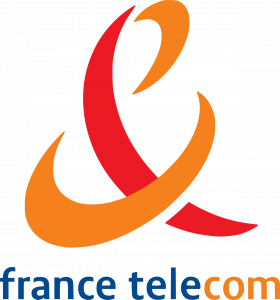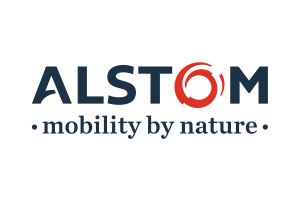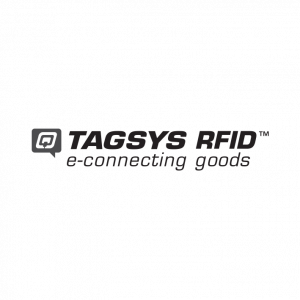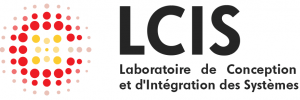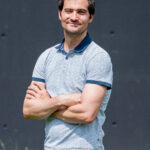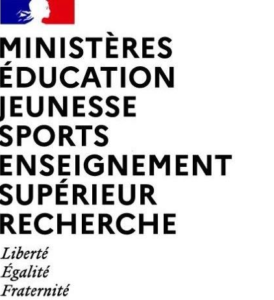ORSYS TEAM
Optoelectronic and Radiofrequency Systems
ORSYS : Optoelectronic and Radiofrequency Systems
The research developed within the ORSYS group revolves around the use of radiofrequency (RF) technologies and signals, wireless, for communication, signal processing, and measurement. The members of ORSYS are specialists in RF, particularly in the design, optimization, and measurement of communicating, hybrid, or integrated systems. ORSYS is particularly interested in passive information transmission systems based on the principles of retro-modulation and backscattering of electromagnetic waves.
Among the studied systems are wireless/contactless systems such as RFID technologies and Ultra-Wideband (UWB). The research relies on professional CAD tools for RF design and electromagnetic simulation, particularly for antennas, as well as RF and optoelectronic measurement tools, especially an anechoic chamber.
The group’s work involves numerous academic and industrial collaborations both nationally and internationally. The group is a partner in projects supported by competitiveness clusters: Minalogic, Techtera, and SCS. Research on RFID is developed in synergy with the Valence traceability cluster. ORSYS members participate in many conferences and events (IEEE, URSI, etc.) at both national and international levels, often as organizers or invited speakers.
The group consists of nearly twenty people, including 6 senior researchers and about ten PhD students, half of whom are directly involved in R&D work for companies.
Research Areas
Radiofrequency Identification (RFID)
The RFID activity has been present within the group for several years. It began with research on two main axes: the design of UHF and microwave tags on low-cost substrates such as paper, fabric, and plastic, and the experimental characterization of the functional parameters of the tags. Thanks to these developments, the group has gained significant expertise in RFID, the design and measurement of highly constrained miniaturized antennas, the RF characterization of substrates, and the measurement of RFID systems. The group is involved in numerous collaborative projects, both in France and abroad, with public laboratories and companies. Work has been conducted on the automatic generation of antennas for UHF tags, the creation of robust tags for environments including metallic ones, the characterization of RFID chips and systems, and sensor tag networks in the context of the Internet of Things.
More recently, the group’s activities in this area have particularly focused on issues related to nonlinear RFID communication and the “RFID sensor” theme.
Nonlinear RFID Communication
The objective of this axis is to study the information contained in the harmonics of the RFID signal returned by the tag to exploit them, for example, to improve the robustness of the radio link or to bring new functionalities. An experimental protocol has been established to characterize the spectral content of the backscattered signals. Although the detected levels remain low (around -80 to -90 dBm at a distance of about one meter), it has been observed from several types of commercial tags that the load switching modulation reflects on the harmonics generated by the tag’s regulator. Thus, the odd-order harmonics carry the same information as the fundamental.
These studies allowed us to validate the concept of “RFID Communication on the Nth harmonic.” Alongside these characterizations, we worked on ways to enhance the levels emitted on the 3rd harmonic by considering recent chips. We demonstrated that it is possible to boost the received level on the 3rd harmonic, and several implementations showed (for the first time!) RFID communication at the third harmonic over distances of several meters. Since these initial demonstrations of harmonic communication, this theme has evolved towards exploiting the nonlinear properties of RFID chips for energy harvesting and powering RFID sensors. Numerous applications have been demonstrated, particularly in the context of industrial collaborations in France and internationally (MTT-TC24, COST 1301).
RFID Sensor
In terms of application, RFID technology is very prominent in the field of traceability. Today, many works aim to endow tags with a “sensor” function. In this context, the identification of products, particularly food, and their quality in terms of “freshness,” without damaging them, is a very promising research direction. To achieve this transformation, we exploit the sensitivity of the antenna to its immediate environment. Thus, based on the measurements of the permittivity of food according to its freshness, we have demonstrated the feasibility of using a tag as a wireless sensor for detecting the quality of food such as meat.
RÉFÉRENCES
- M. Daiki and E. Perret, « Segmented Solenoid Coil Antenna for UHF RFID Near-Field Reader applications, » IEEE Journal of Radio Frequency Identification, vol. 2, pp. 210-218, 2018.
- A. Abdelnour, F. Buchin, D. Kaddour and S. Tedjini, « Improved Traceability Solution Based on UHF RFID for Cheese Production Sector, » in IEEE Journal of Radio Frequency Identification, vol. 2, no. 2, pp. 68-72, June 2018.
- K. Zannas, H. El Matbouly, Y. Duroc and S. Tedjini, « Self-Tuning RFID Tag: A New Approach for Temperature Sensing, » in IEEE Transactions on Microwave Theory and Techniques, vol. 66, no. 12, pp. 5885-5893, Dec. 2018.
- M. Daiki and E. Perret, « Near-Field Modular Antenna Concept with Configurable Reading Area for RFID Applications, » IEEE Trans. Antennas Prop., Vol. 65, Issue 3 , March 2017.
- D. Allane, GA Vera, Y Duroc, R Touhami, S Tedjini « Harmonic power harvesting system for passive RFID sensor tags » IEEE Transactions on Microwave Theory and Techniques 64 (7), 2347-2356, 2016
- Andia Vera, G.; Nawale, S.D.; Duroc, Y.; Tedjini, S., « Read Range Enhancement by Harmonic Energy Harvesting in Passive UHF RFID, » Micro. & Wire. Comp. Letters, IEEE , vol.25, no.9, pp.627-629, Sept. 2015
- Andia Vera, G.; Duroc, Y.; Tedjini, S., « Third Harmonic Exploitation in Passive UHF RFID, » in , IEEE Transactions on Microwave Theory and Techniques, vol.63, no.9, pp.2991-3004, Sept. 2015
- Andia Vera, G.; Allane, D.; Georgiadis, A.; Collado, A.; Duroc, Y.; Tedjini, S., « Cooperative Integration of Harvesting RF Sections for Passive RFID Communication, » IEEE Transactions Microwave Theory and Techniques, vol.63, no.12, pp.4556-4566, Dec. 2015
Chipless RFID
RFID is one of the major technologies experiencing significant growth in the field of identification/authentication. It is an automatic information capture technique, using remote radio reading, of a tag containing the data. Despite the numerous advantages that RFID provides, its deployment remains hindered by several factors, including economic, technological, and societal aspects. These include the still high cost of tags, the lack of reliability and security in the information contained in the RFID chip, and the recycling aspects of the tags.
The research activities of the ORSYS group in this domain focus on the development of a new family of low-cost tags. To achieve this, the creation of chipless tags presents a very attractive solution. We have proposed an approach where information is encoded by exploiting the intrinsic electromagnetic properties of materials. The ORSYS group started its activities on the chipless RFID theme in 2009, and since then, it has become one of the main players in this field, earning international recognition.
The objectives are:
- To develop radar approaches for the measurement of physical quantities.
- To develop an identification system based on this principle.
More than six theses have been completed on this theme, generating over a hundred articles, conferences, or patents. The group’s activities on Chipless technology have been recognized with several awards and honors: junior member of the IUF (2014-2019), winner of the Léon Brouillon 2016 and the MIT Technology Review’s French innovator under 35-2013, and the IEEE MTT-S 2019 Outstanding Young Engineer Award. Based on these works, Etienne Perret obtained an ERC consolidator Grant titled “ScattererID” in 2017 (started in September 2018). This project, which will span from 2018 to 2023, constitutes a major research axis for the group in the coming years.
The group’s activities in this domain have resulted in several books, notably a series of four volumes titled “Remote Identification Beyond RFID – Chipless RFID and dedicated Smart Wireless Systems.”
Perspectives: New Functionalities in Chipless:
The ORSYS group is one of the main players in chipless RFID worldwide, interested in the technology as a whole, including both the tag and the reader. To differentiate itself from barcodes, this technology must tomorrow offer more functionalities while maintaining a certain reading flexibility inherent to using electromagnetic waves to interrogate the tag. Through the ERC ScattererID project, the objective is to develop a concept of wireless RF characterization, halfway between the use of resonant cavity principles and a quasi-optical free-space approach. The idea is based on developing a reflectometry technique using resonant backscattering elements. From an application perspective, the printed, chipless tag should, in addition to an identifier, be rewritable, include a sensor function, or allow a user to physically interact with an electronic system.
Références
- J. Methapettyparambu Purushothama, A. Vena, B. Sorli, and E. Perret, « Electronically Re-Configurable, Non-Volatile, Nano-Ionics-Based RF-Switch on Paper Substrate for Chipless RFID Applications, » Technologies, vol. 6, p. 58, 2018.
- N. Barbot and E. Perret, « A Chipless RFID Method of 2D Localization Based on Phase Acquisition, » Journal of Sensors, vol. 2018, p. 6, 2018.
- M. P. Jayakrishnan, A. Vena, B. Sorli, and E. Perret, « Solid-State Conductive-Bridging Reconfigurable RF-Encoding Particle for Chipless RFID Applications, » IEEE Microwave and Wireless Components Letters, vol. 28, pp. 506-508, 2018.
- Z. Ali, N. Barbot, R. Siragusa, E. Perret, D. Hely, M. Bernier, and F. Garet, “Detection of Minimum Geometrical Variation by Free-Space-Based Chipless Approach and its Application to Authentication’, IEEE Microw. Wireless Compon. Lett., vol. 28, no. 4, pp. 323–325, Apr. 2018.
- M. Garbati, E. Perret, R. Siragusa and C. Halopé, « Ultra-Low-Jitter Fully Tunable Baseband Pulse Generator for UWB Applications, » in IEEE Transactions on Microwave Theory and Techniques, vol. 66, no. 1, pp. 420-430, Jan. 2018.
- M. Purushothama, A. Vena, B. Sorli, and E. Perret, « Nafion Based Fully Passive Solid State Conductive Bridging RF Switch, » IEEE Microwave and Wireless Components Letters, Vol. 27, Issue 12, Dec. 2017.
- M. Garbati, E. Perret, R. Siragusa, and C. Halopé, « Towards Chipless RFID Reading Systems Independent of Tag Orientation, » IEEE Microwave and Wireless Components Letters, Vol. 27, Issue 12, pp. 1158-1160, Dec. 2017.
- M. Garbati, R. Siragusa, E. Perret, and C. Halopé, « Impact of an IR-UWB Reading Approach on Chipless RFID Tag, » IEEE Microwave and Wireless Components Letters, vol. 27, pp. 678 – 680, 2017.
- E. Perret, « Displacement Sensor Based on Radar Cross-Polarization Measurements, » IEEE Trans. Microw. Theory Techn., vol. 65, pp. 955 – 966, 2017.
- O. Rance, R. Siragusa, P. Lemaître-Auger and E. Perret, « Contactless Characterization of Coplanar Stripline Discontinuities by RCS Measurement, » in IEEE Transactions on Antennas and Propagation, vol. 65, no. 1, pp. 251-257, Jan. 2017.
Books:
Series title : « Remote Identification Beyond RFID”
subtitle: “Chipless RFID and dedicated Smart Wireless Systems”
- M. Garbati, E. Perret, R. Siragusa, Chipless RFID Reader Design for Ultra-Wideband Technology, ISTE-Elsevier, Fev. 2018.
- O. Rance, E. Perret, R. Siragusa, P. Lemaître-Auger, RCS Synthesis for Chipless RFID – Theory and Design, ISTE-Elsevier Jul. 2017.
- O. Rance, E. Perret, R. Siragusa, P. Lemaître-Auger, Synthèse de RCS pour la technologie RFID sans puce à forte capacité de codage, ISTE, Jul. 2017.
- A. Vena, E. Perret, and S. Tedjini, La RFID sans puce – Théorie, conception, mesures: ISTE, 2016.
- Vena, E. Perret, S. Tedjini, Chipless RFID based on RF Encoding Particle – Realization, Coding and Reading System, ISTE-Elsevier, Aug. 2016.
- E. Perret, Radio Frequency Identification and Sensors: From RFID to Chipless RFID, Wiley-ISTE, 2014.
Specific Antennas for Communications
The ORSYS group has experience in designing antennas for specific applications. This includes situations where the antenna is constrained in terms of size but is mainly intended to be used in a close environment (often in direct contact with the antenna), potentially changing, or even in contact with a human body. Knowing that an antenna is directly impacted by its immediate environment, it is essential to introduce antennas based on new concepts to be compatible with these challenges.
Communicating Garment
The objective of this sub-theme is to design and develop antennas to be integrated into a garment, such as a vest. We have developed an innovative solution based on a concept of an antenna distributed over different parts of the vest. The antenna’s radiation must meet the desired performance in terms of frequency band, radiation direction, and spatial coverage. Moreover, a Specific Absorption Rate (SAR) below the standard SAR<2W/kg must be maintained in such applications. The developed concept easily achieves these performance goals. Technologically, the concept is fully compatible with digital printing technologies as the antennas are single-sided. Additionally, the effects of vest deformations in motion have been studied and accounted for in a sensitivity study. Several demonstrators have been created and validated communication distances well over a kilometer for a power of 1W and a frequency around 2 GHz. This innovative concept and the results obtained were presented at the EUROSATORY 2014 exhibition on the Innovation stand of the DGA, at their invitation.
Antenna Networks
In this sub-theme, we have worked on designing original antenna networks. A first study focused on an optically focused network: achieving a focus zone in space. By appropriately arranging a limited number of antennas, we demonstrated that with two phase shifters, it was possible to dynamically modify the focus position without significant degradation of the focus spot size. Another study focused on a sub-sampled network to produce a localized wave. Through simulation, a demonstration of beam propagation over more than 100 has been achieved. These studies share a common network operating in the near field, but in the far field for an individual antenna. A final theoretical study focused on leaky wave antennas. A network approach was adopted, allowing us to generalize an approach based on the network factor to design non-uniform antennas. This theoretical approach is particularly suitable for CRLH antennas.
Spatial Wave Filtering
We have worked on plane wave filtering. The goal was to design wallpaper capable of selectively filtering waves at WiFi frequencies (2.4 and 5.0 GHz) or mobile phone frequencies (3G and later 4G). New frequency-selective surface patterns have been designed and tested by printing conductive inks on paper. The patterns allow independent selection of 2 and even 3 filtering frequencies. Experimental results show attenuations of more than 25 dB at the chosen frequencies. Industrialization by DHJ Internationale on fabric showed even better performance. A second study focused on the inverse effect, favoring the passage of an electromagnetic wave through a building. We demonstrated that by adding conductive patterns, it is possible to improve wave passage through a thermally insulated window by 10 dB. Without this pattern, the non-selective attenuation is about 30 dB, reduced to 20 dB with the pattern.
ORSYS team members
The teams regularly seek and welcome new researchers and PhD students to contribute to their research.
Publications
The entire team produces and publishes numerous publications on their themes each year
Recently addressed topics by ORSYS:
- CBRAM technology: transition from a memory cell to a programmable and non-volatile impedance for new radiofrequency applications
- Depolarizing Chipless RFID Tag Made Orientation Insensitive by Using Ground Plane Interaction
- Augmented Depolarizing Scatterer Based on Resonant Elements For Polarimetric Radar Calibration
- Extraction of Aspect-Independent Parameters Using Spectrogram Method for Chipless Frequency-Coded RFID
- A flipping UHF RFID sensor-tag for metallic environment compliant with ETSI and FCC bands
Resources
The ORSYS team’s equipment includes experimental resources, computing stations, and simulation software for designing and characterizing RF devices. The fabrication of RF printed circuits is either done internally (Esynov platform) or outsourced. Similarly, the special mechanical systems needed are created by the Fab Lab Gi-Nova of AIP Primeca. For more specialized devices, we use the Advanced Technological Platform (PTA) located at Minatec (Class 1000 cleanroom).
Experimental Resources:
- Vector Analyzer: Keysight USB Vector Network Analyzer P9375A 2-port | 300 kHz to 26.5 GHz
- Antenna Characterization Bench: 600 MHz – 18 GHz – MVG / Starlab
- Portable RF Analyzer: FieldFox Handheld Analyzers – Keysight -N9918A | 5 kHz – 26.5 GHz
- Vector Analyzer: Agilent PNA Network Analyzer N5222A | 10 MHz – 26.5 GHz
- Millimeter Extension Module: Virginia Diodes VNA Extender – VDI Model: WR15-VNAX | 50 GHz -75 GHz
- Vector Analyzer: HP 8720D | 50MHz-20GHz
- Real-Time Spectrum Analyzer: 8 GHz Tektronix RSA3408A
- Wideband Oscilloscope: 12GHz Agilent DSO91204A
- Pulse Generator: Picosecond Pulse Lab 3500D (70ps)
- Arbitrary Signal Generator: 3GHz Agilent N5182A
- UHF RFID Tag Characterization Bench: TAGFORMANCE PRO- VOYANTIC
- Power Amplifiers: Mini-Circuits | TVA-11-422A+ | 10 MHz – 4.2 GHz, output power 30 dBm – gain 39 dB
- Material Characterization Bench and Cell for RF:
- Damaskos, Inc. Model 08 Thin Sheet Tester – CAVITY™
- Agilent N1501A Dielectric Probe Kit | N1501A-102 Slim form probe kit & N1501A-104 Performance probe
- Probe Station: Cascade Microtech MPS150
- Fast Optoelectronic Measurement Bench: around 1.3µm and 1.55µm (modulated signals up to 20GHz) – HP 83420A Lightwave Test Set Laser
- Anechoic Chamber for Antenna Measurement:
- Wideband RF Antennas:
- Dual-Ridge Horns – Satimo SH600 | 0.6 – 9 GHz
- Dual-Ridge Horns – Satimo SH2000 | 2 – 32 GHz
- Open Boundary Quad-Ridge Horns | Satimo QH800 | 0.8 – 12 GHz
- Open Boundary Quad-Ridge Horns | Satimo QH2000 | 2 – 32 GHz
- Double Ridge Guide Horn Antenna SAS-571 | A.H. System | 0.7 – 18 GHz
- Wideband RF Antennas:
Specific Simulation Tools for RF Systems:
- ANSYS Electromagnetic Suite
- CST Microwave Studio
- ADMS-RF from Mentor Graphics
They collaborated with ORSYS:
Academic and Public Collaborations


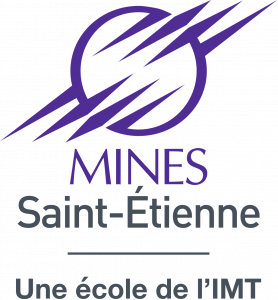





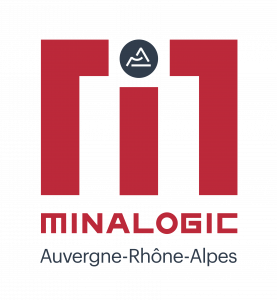



Contractual Industrial Partnerships
